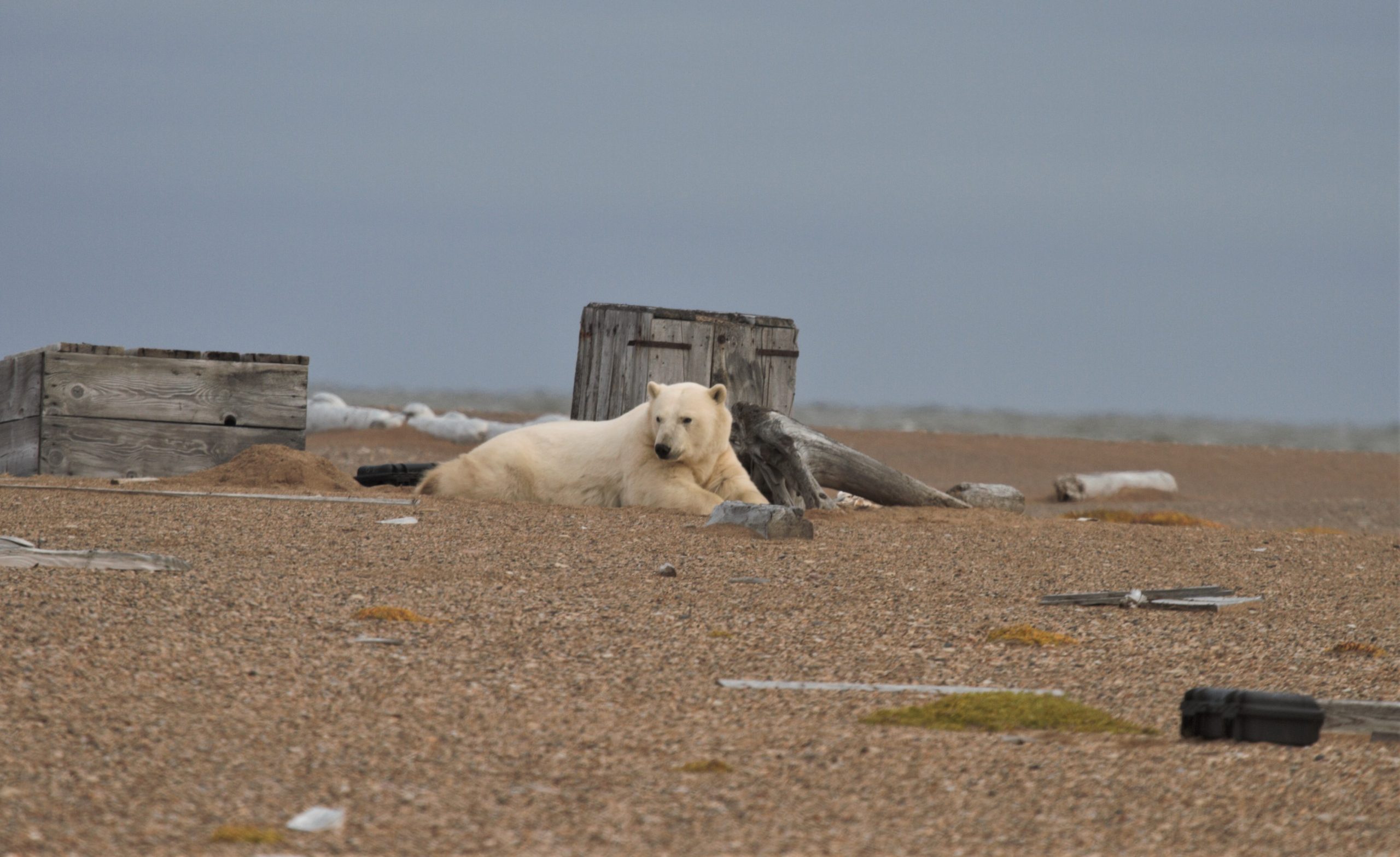Polar bears arriving on Cooper Island was one of three signs of climate change.
I have been coming out to Cooper Island, off Alaska, by myself every summer since 1975 to study a colony of up to 400 pairs of Black Guillemot sea birds. Over this time, I have witnessed the first biological responses to climate change.
First, I noticed in the late 1990’s that the birds were laying eggs earlier in response to the snow melting earlier. That was interesting, but not too surprising.
Second, what was surprising was when the edge of the Arctic pack ice melted away northwards, leaving a bigger expanse of sea between the land and the ice. The birds find their favorite prey, Arctic Cod, at the ice edge, so this took it out of their reach. I began to see the young starving and dying in their nests.
Third, as the ice shrank back off the continental shelf, the polar bears began to abandon it and swim to land. Cooper Island is a low sand and gravel spit about 5 km long and it was the first place they found. I saw very few polar bears before 2002 and now they dominate the landscape, coming ashore and eating the guillemot chicks. For the first 27 years of the study I lived in a small tent that I couldn’t even stand up in. After seeing a bear rip up a tent, I couldn’t sleep in one any more and put up a little cabin instead.
